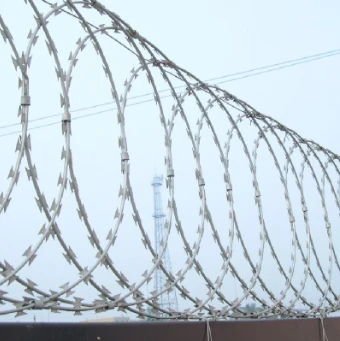The Versatility of Perforated Steel Angles An In-Depth Exploration
In the realm of construction and manufacturing, materials play a crucial role in the durability and efficiency of structures and components. Among the myriad of materials available, perforated steel angles have emerged as a popular choice due to their versatility, strength, and innovative applications. This article delves into the characteristics, uses, and benefits of perforated steel angles, highlighting why they are indispensable in modern engineering and design.
Understanding Perforated Steel Angles
Perforated steel angles are L-shaped steel sections with strategically placed holes or perforations throughout their surface. These perforations can vary in size, shape, and spacing, allowing for a degree of customization that caters to specific project requirements. The primary material utilized in these angles is typically mild steel, which offers a balance of strength, weldability, and cost-effectiveness.
The process of creating perforated steel angles involves cutting and forming steel sheets into angular profiles and subsequently applying perforation techniques such as punching or laser cutting. This process not only enhances the aesthetic appeal of the steel but adds functional attributes such as weight reduction, improved airflow, flexibility in design, and ease of integration into other structural components.
Applications in Construction and Industrial Design
Perforated steel angles are employed across diverse industries due to their adaptability
1. Structural Support In building frameworks, perforated steel angles are used as brackets and supports, providing stability while minimizing excess weight. The perforations allow for additional connections that enhance structural integrity.
2. Architectural Features Architects utilize perforated steel angles to create visually striking facades, canopies, and shading devices that provide both form and function. The patterns created by the perforations can be tailored to achieve desired lighting effects and aesthetic designs.
3. HVAC Systems The ventilation capabilities of perforated steel angles make them suitable for heating, ventilation, and air conditioning systems. Their design allows for efficient air distribution while maintaining necessary structural frameworks.
perforated steel angle

4. Railings and Safety Barriers Perforated steel angles are commonly used in the construction of railings and barriers, where they can enhance safety without obstructing visibility. The perforations can be designed to meet safety regulations while allowing light and air to pass through.
5. Signage and Displays The customizable nature of perforated steel angles lends itself to signage and display systems, where they can be used to mount signs or create stand-alone display structures that are attractive and functional.
Benefits of Using Perforated Steel Angles
The advantages of using perforated steel angles over solid steel sections are substantial
- Weight Reduction The perforated design significantly reduces the overall weight of the steel angles without compromising strength. This can lower transportation costs and make handling easier on-site. - Enhanced Aesthetics The ability to create intricate patterns through perforation allows designers to incorporate artistic elements into their projects, turning functional components into works of art.
- Improved Performance Perforations can facilitate better thermal management and airflow in HVAC applications, supporting more energy-efficient systems.
- Cost-Effectiveness The beneficial balance of material usage, shipping, and installation contributes to overall cost savings in construction projects.
Conclusion
Perforated steel angles exemplify the intersection of functionality and creativity in modern engineering. Their diverse applications across numerous industries showcase their invaluable role in construction, architecture, and design. As the demand for innovative, efficient, and aesthetically pleasing architectural solutions continues to grow, perforated steel angles will undoubtedly remain at the forefront, proving that with thoughtful design and material selection, we can shape the environments in which we live and work. As we move forward, the expanding range of applications and benefits underscores the essential place of perforated steel angles in the toolkit of builders and designers alike.

















